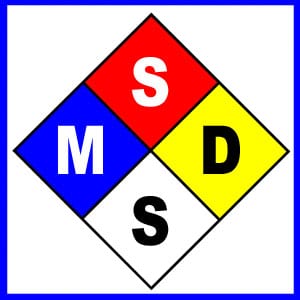Safety Data Sheets, formerly known as MSDS (Material Safety Data Sheets) are used for cataloging information on chemical compounds and chemical mixtures. SDS information shall include in-structions for safe use and potential hazards associated with a particular material or product. The SDS will also provide information if any “PPE” personal protective equipment is required. The SDS’s should be accessible for all employees and workers to access in daily activities and in emergency situations. SDS’s are required per OSHA’s Hazard Communications Standard “HCS”, it’s purpose is to make your workplace safer. SDS’s are required by law to have the following 16 sections of information:
Section 1—Identification: Manufacturer or distributor name, address, phone number, emergency phone number, recommended use, and restrictions on use.
Section 2—Hazard(s) identification: All hazards regarding the chemical and required label elements.
Section 3—Composition/Information on ingredients: Information on chemical ingredients and trade secret claims.
Section 4—First-Aid Measures: First aid treatment for exposure to a chemical and the symptoms (immediate or delayed) of exposure.
Section 5—Fire-Fighting Measures: Techniques/ equipment recommended for extinguishing a fire involving the chemical and hazards that may be created during combustion.
Section 6—Accidental Release Measures: Steps to take in the event of a spill or release., emergency procedures, protective equipment and proper methods of containment and cleanup.
Section 7—Handling and storage: Precautions for safe handling and storage.
Section 8—Exposure controls/Personal protection: OSHA’s permissible exposure limits (PELs), threshold limit values (TLVs), appropriate engineering controls, and PPE.
Section 9—Physical and chemical proper-ties: Chemical’s characteristics.
Section 10—Stability and reactivity: Chemical stability and possible hazardous reactions.
Section 11—Toxicological information: Routes of exposure (inhalation, ingestion, or absorption con-tact), symptoms, acute and chronic effects, and numerical measures of toxicity.
Section 12—Ecological information: How the chemical might affect the environment and the duration of the effect.
Section 13—Disposal considerations: Safe handling of wastes and methods of disposal.
Section 14—Transportation information: Packing, marking, and labeling requirements for hazardous chemical shipments.
Section 15—Regulatory information
Section 16—Other information: Date of preparation or last revision.









